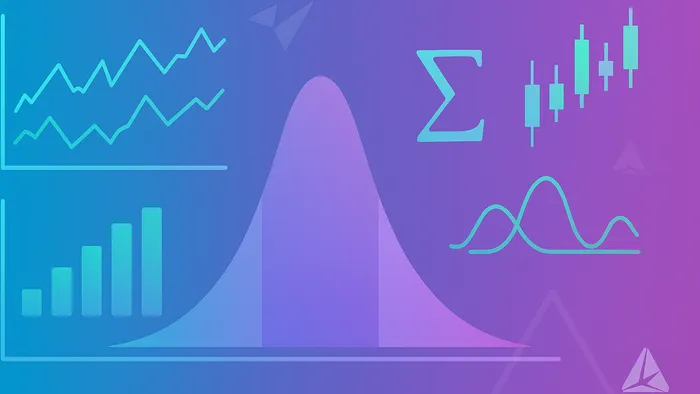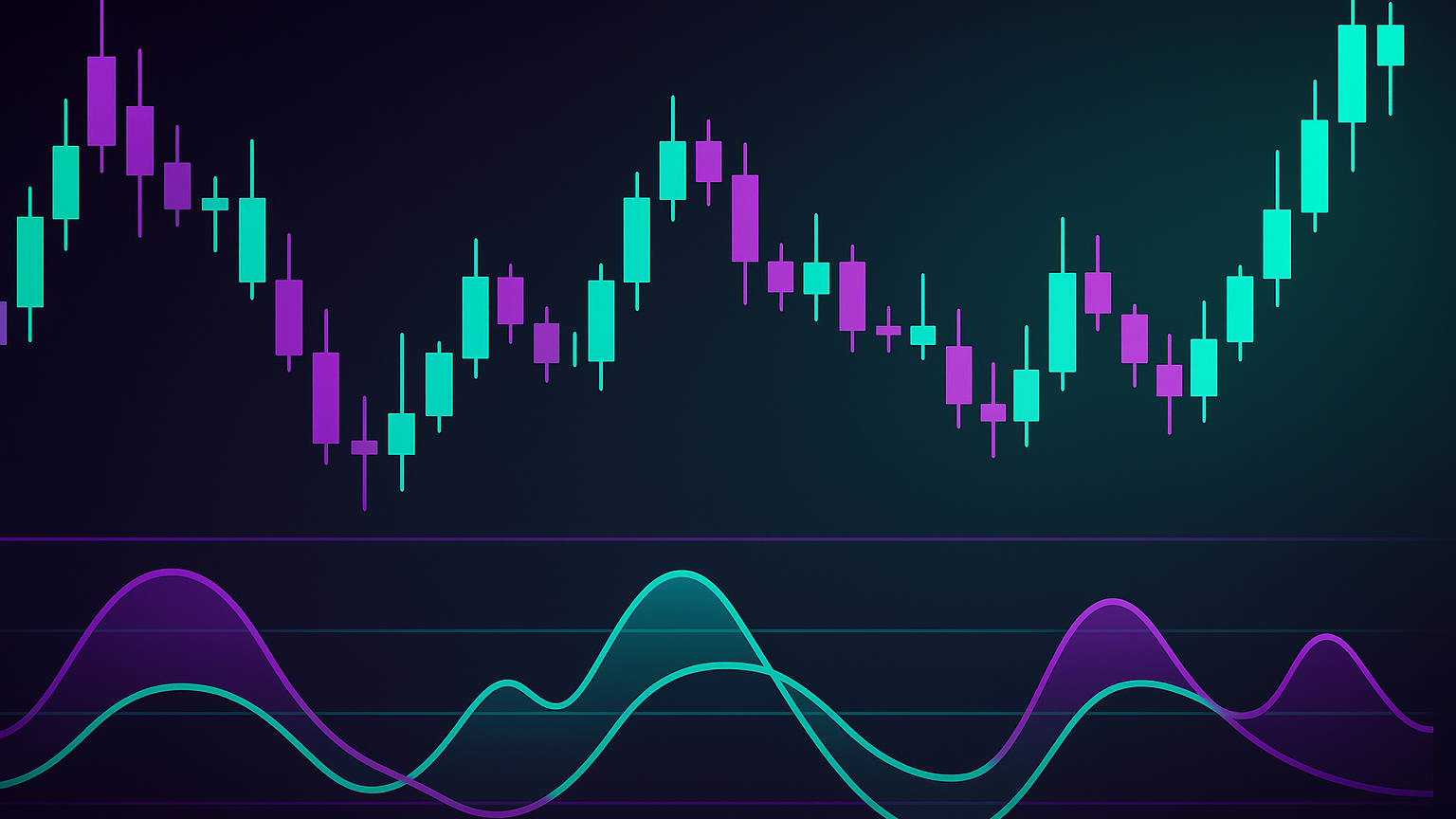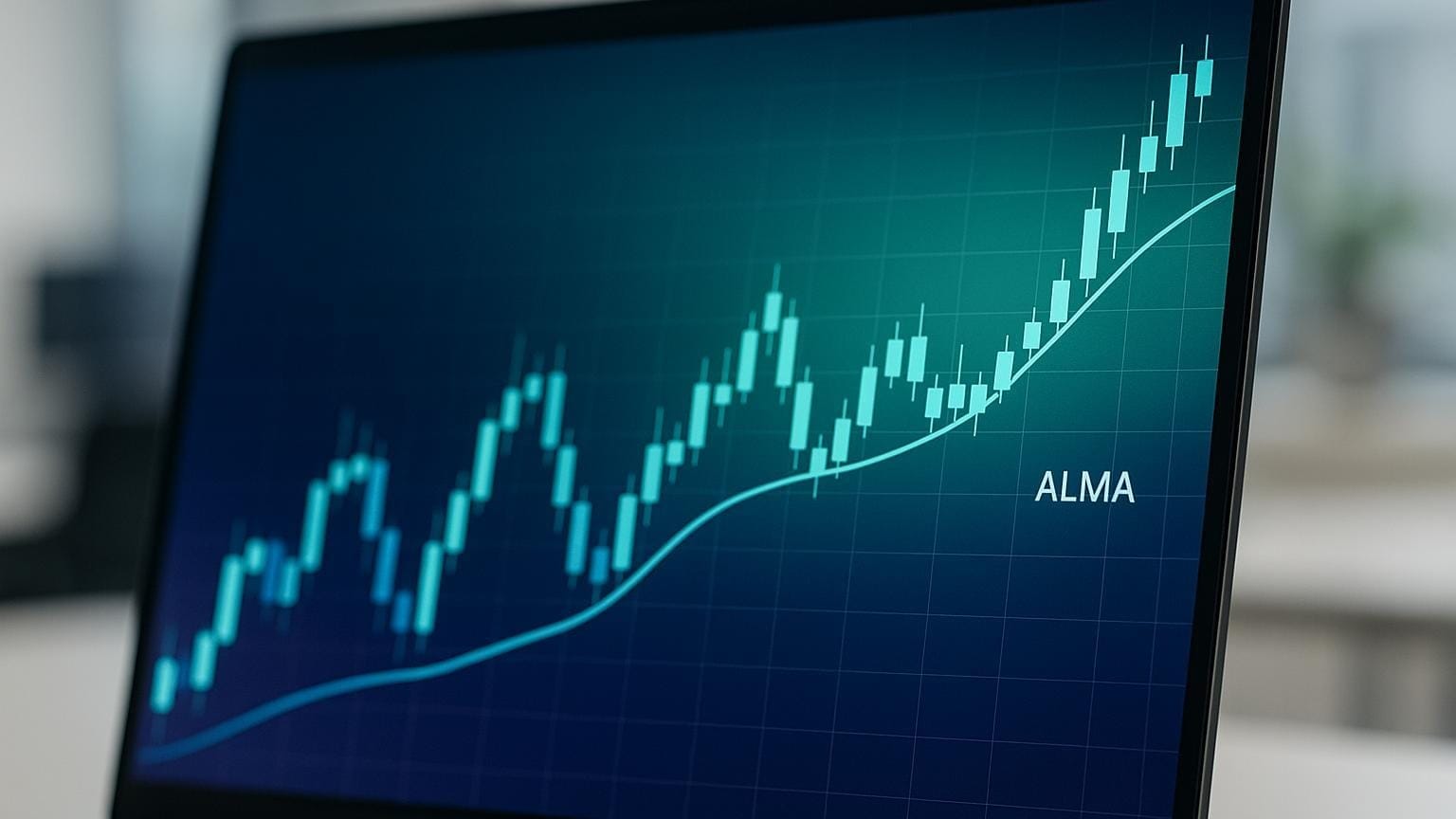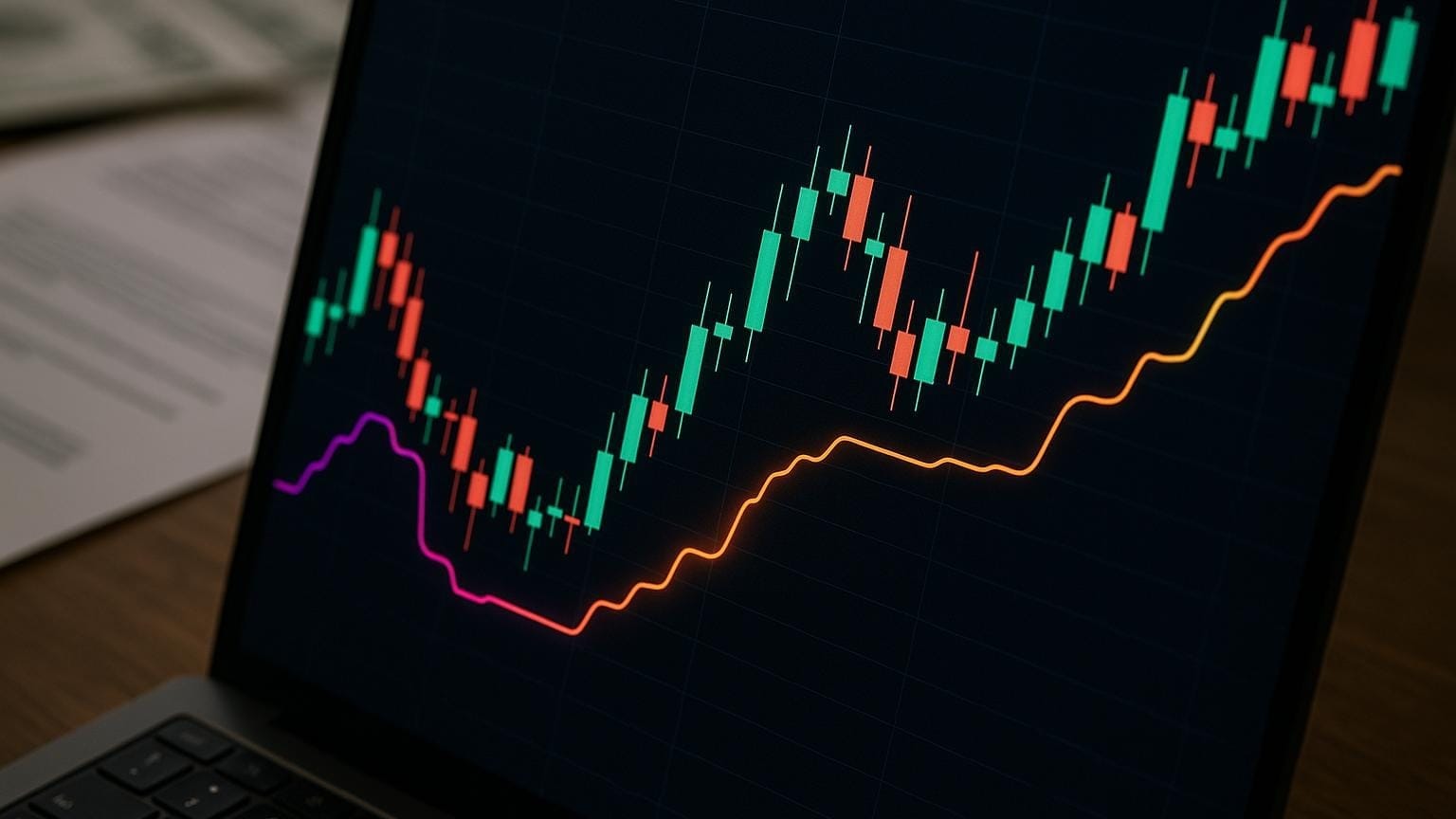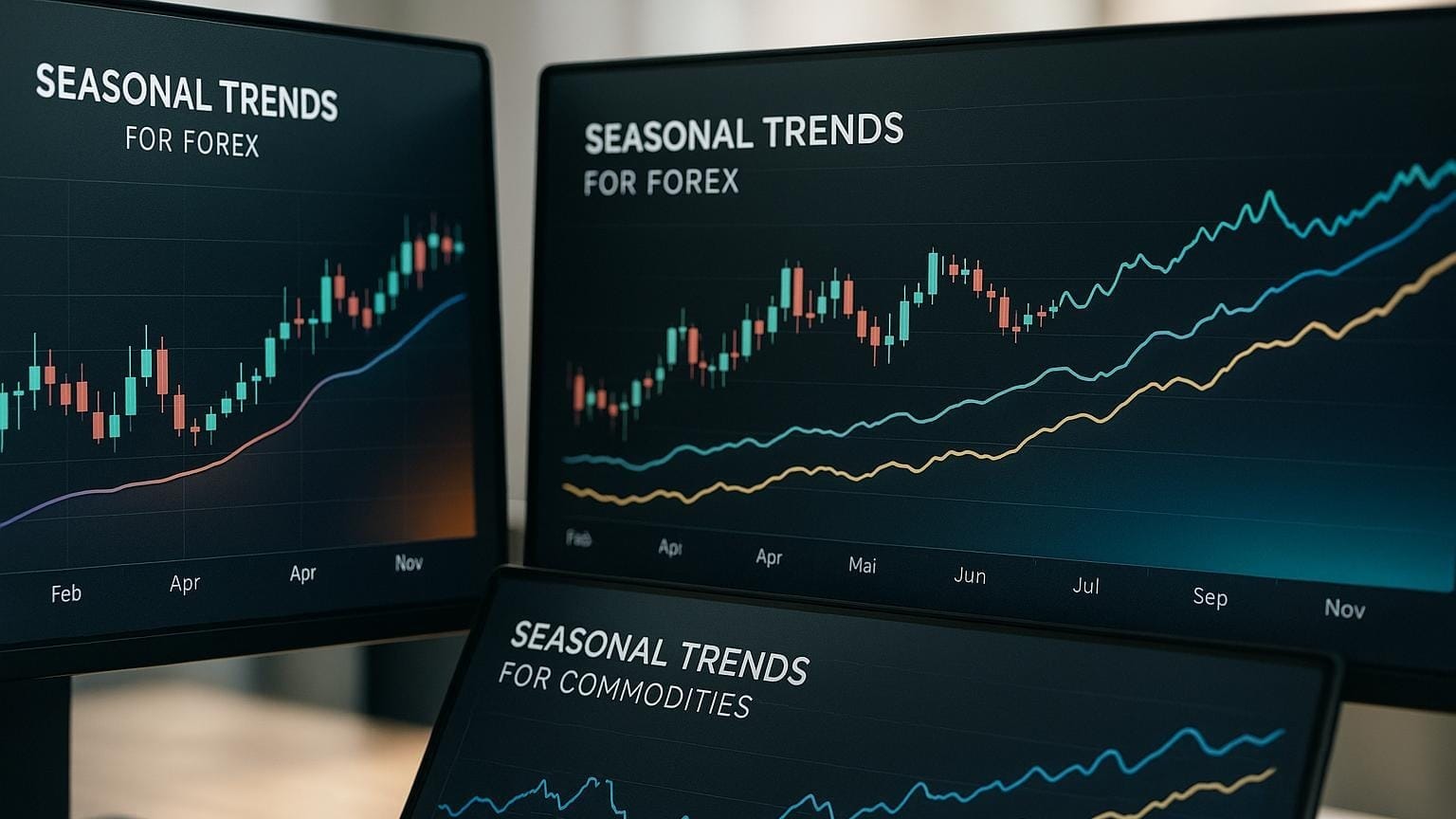Understand how to calculate historical volatility, its applications in trading, and how it aids in risk management and strategic decision-making.
Historical volatility quantifies how much an asset's price has fluctuated over a specific period, using the standard deviation of past price returns. It helps traders assess risk, position sizes, and portfolio allocation. Unlike implied volatility, which predicts future price swings based on market expectations, historical volatility relies solely on past data, offering a factual basis for decision-making. For foundational background on the math of standard deviation, see this primer.
Key Takeaways:
- Definition: Historical volatility measures past price fluctuations as an annualized percentage.
- Uses: Guides risk management, position sizing, and strategy selection.
- Calculation:
- Collect daily closing prices for 30–252 trading days.
- Compute daily logarithmic returns:
ln(P_t / P_t-1)(see log returns for a concise definition). - Find the standard deviation of returns and annualize it:
Daily Std Dev × √252.
- Applications: Helps traders manage risk, allocate portfolios, and optimize options strategies by comparing historical and implied volatility.
Benefits:
- Provides objective, data-driven insights.
- Easy to calculate and widely available on trading platforms.
- Useful for assessing market risk and managing portfolio volatility.
Drawbacks:
- Relies on past data, making it a lagging indicator.
- Sensitive to outliers and sudden market changes.
- Cannot predict future volatility spikes or trends.
For traders, combining historical volatility with other tools and forward-looking analysis ensures a more balanced approach to market strategies.
Historical Volatility: An Overview
How to Calculate Historical Volatility Step by Step
You can calculate historical volatility in three simple steps: collect price data, compute daily logarithmic returns, and derive annualized volatility using standard deviation. A spreadsheet makes this process straightforward.
Collect Historical Price Data
Start by gathering daily closing prices for the asset over a period of 30 to 252 trading days, depending on your strategy. Shorter periods, like 30 or 60 trading days, are ideal for short-term trading, while longer periods, such as 180 to 252 trading days, are better suited for portfolio management and long-term analysis.
"You can use 6 months also, you will get the daily vol of 6 month. I generally prefer 1-year data." - Karthik Rangappa, Author, Zerodha Varsity [1]
For U.S. stocks, reliable sources include official exchange websites like NYSE or NASDAQ, as well as financial data providers. Once you have the data, clean it to include only the dates (in MM/DD/YYYY format) and closing prices (in USD).
For instance, if you're analyzing Apple Inc. (AAPL) stock, your cleaned data might show dates ranging from 01/03/2024 to 12/31/2024 with closing prices between $150.25 and $195.80. After cleaning, you're ready to calculate daily returns.
Calculate Daily Logarithmic Returns
With clean price data, calculate daily logarithmic returns using the formula ln(P_t / P_{t-1}), where P_t is today’s closing price and P_{t-1} is yesterday’s closing price.
Input the closing prices into column B of your spreadsheet and create a new column for logarithmic returns. In cell C3 (assuming your first price is in B2), enter the formula =LN(B3/B2) and copy it down for all rows.
For example, if Apple closed at $180.50 yesterday and $182.75 today, the logarithmic return would be ln(182.75/180.50) = 0.0123, or about 1.23%. This method ensures that returns are time-additive, making them reliable for scaling across different time periods.
Once you’ve calculated the daily returns, the next step is to find the standard deviation and annualize the results.
Find Standard Deviation and Annualize the Result
Now, calculate the standard deviation of the daily returns and convert it into an annualized measure by multiplying it by the square root of 252 (the approximate number of U.S. trading days in a year).
Use your spreadsheet’s built-in standard deviation function. In Excel, use =STDEV.S() for sample data (commonly used for subsets of trading days) or =STDEV.P() for population data. Most traders use the sample standard deviation since they typically analyze a subset of all trading days.
To annualize the daily volatility, multiply the standard deviation by √252. The formula looks like this: Daily Standard Deviation × √252.
For instance, if the daily standard deviation is 0.025 (2.5%), the annualized volatility would be 0.025 × √252 = 0.025 × 15.87 = 0.397, or 39.7%. This means the asset typically experiences annual price fluctuations of about 40% based on historical data.
To make this easier to interpret, convert the decimal figure into a percentage. A volatility of 0.397 becomes 39.7%, which can then be compared to other assets or used to inform risk management strategies. Higher percentages indicate more volatile assets, while lower percentages suggest more stable price movements.
This annualized volatility provides a standardized risk measure that’s critical for informed trading and investment decisions.
Using Historical Volatility in Trading Strategies
Historical volatility is a key input in trading, offering valuable insights into risk management and decision-making across varying market conditions.
Assessing Market Risk
Historical volatility reveals how much an asset's price has fluctuated in the past. High historical volatility suggests the asset has experienced large price swings, signaling a higher risk profile. On the other hand, low historical volatility points to a steadier price history, indicating lower risk[2].
This information can shape trading strategies. For assets with high volatility, wider stop-loss levels may be necessary to account for larger price movements, while tighter stops might suit assets with lower volatility. It also helps traders set realistic take-profit targets by understanding typical price ranges. Additionally, in volatile markets, higher margin requirements can arise, making it essential to align capital allocation with the asset's volatility profile. Knowing historical volatility helps traders decide how much capital to commit to each trade, balancing potential rewards with the associated risks[4].
Position Sizing and Portfolio Allocation
Historical volatility is a critical factor in determining position sizes. During periods of high volatility, reducing position sizes can help manage risk, while calmer markets might allow for slightly larger positions[3]. For instance, if the S&P 500 experiences a spike in historical volatility during a market downturn, a trader might scale back their position size to limit exposure while still staying active in the market. For a primer on position sizing, consider this overview.
It’s also a valuable tool for portfolio diversification. Combining assets with varying volatility levels can create a more balanced portfolio. For example, allocating more to stable, low-volatility dividend stocks, a moderate amount to growth stocks, and a smaller share to high-volatility small-cap or tech stocks can help smooth overall performance. Low-volatility assets can provide stability during turbulent times, while high-volatility holdings may capture upside potential when markets recover. This strategy is equally applicable to derivatives markets, where managing risk across different volatility profiles is just as important. See also a concise explainer on portfolio diversification.
Options Trading Applications
Historical volatility plays a major role in options trading, especially when pricing contracts. Models like Black-Scholes rely heavily on this metric, as higher historical volatility typically leads to higher option premiums[2].
Options traders often compare historical volatility with implied volatility to evaluate pricing. For example, if a stock shows a 30-day historical volatility of 25%, but its at-the-money options are priced with an implied volatility of 35%, the options may be overpriced relative to recent price trends. This could signal caution for buyers but present an opportunity for option writers. Conversely, if implied volatility is lower than historical volatility, options might be undervalued, offering a potential buying opportunity. This comparison ensures that traders align their strategies with how the asset typically behaves in the market.
Using Historical Volatility with LuxAlgo Tools
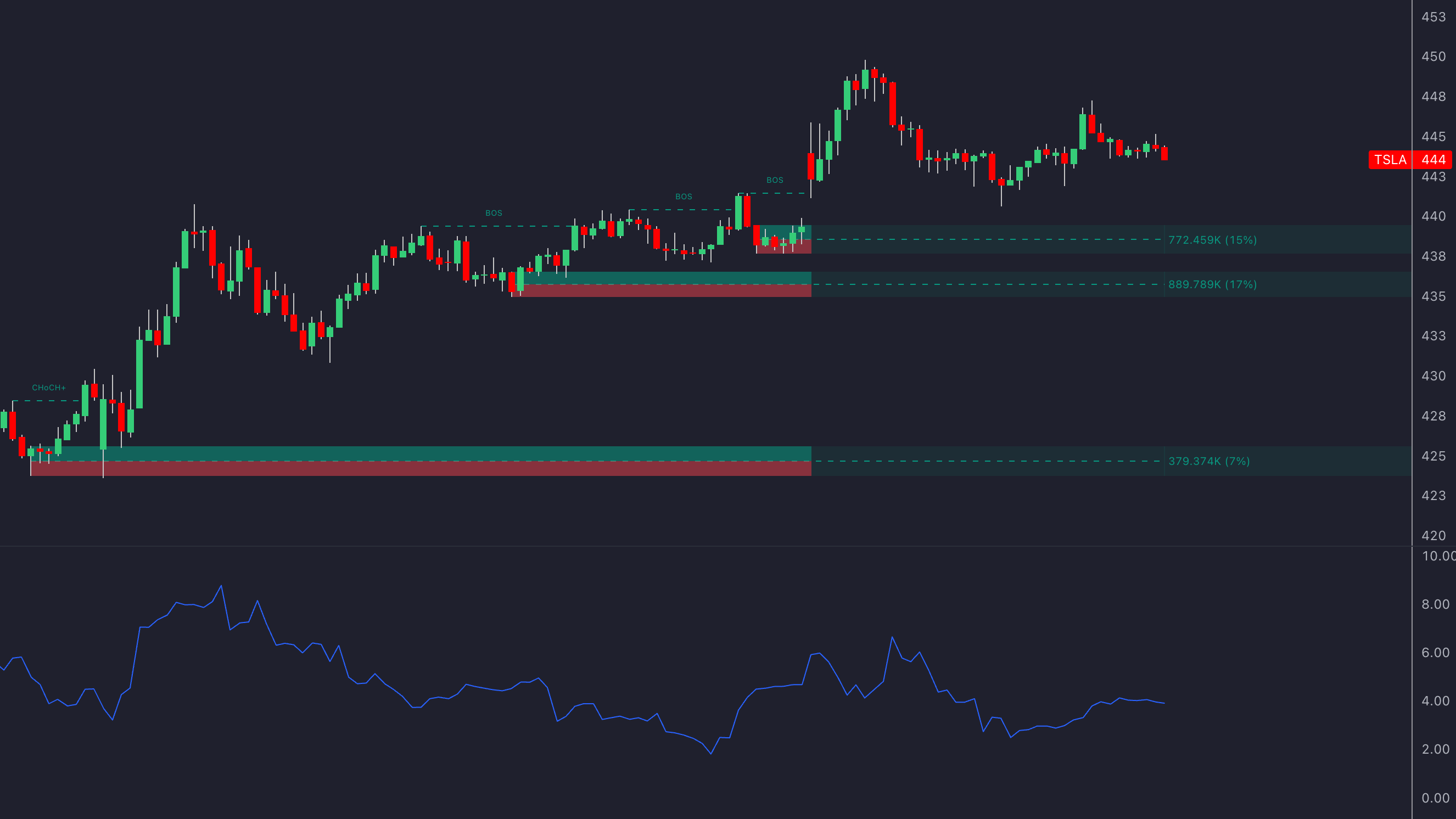
LuxAlgo provides indicators and exclusive tools on TradingView that help analyze historical volatility and its market context. Explore the free Library for indicators, use AI Backtesting to prototype strategies quickly, and check related documentation in the AI Backtesting Assistant docs.
Finding Historical Volatility Indicators
LuxAlgo builds on the concept of historical volatility by providing indicators that are ready for immediate use. The Library includes tools that update in real time, presenting key metrics without requiring manual calculations. For instance, the Oscillator Matrix (OSC) toolkit features oscillators with overlays that clearly show deviations from typical price patterns. These indicators also allow users to customize settings, enabling adjustments to suit specific timeframes or trading styles.
Refining Strategies with LuxAlgo’s AI Tools
LuxAlgo goes beyond manual indicators by offering AI Backtesting, which incorporates volatility data into strategy creation and testing across different market scenarios and timeframes. For a deeper overview, see the AI Backtesting overview and the docs introduction.
Screening Assets by Volatility Levels
LuxAlgo also includes screeners that filter assets based on volatility characteristics. This helps traders identify potential breakouts, contractions, or other patterns, while also providing context on historical performance. Aligning selection with volatility profiles can improve risk management. Subscribers to the Ultimate plan benefit from automated scans that surface assets meeting specific criteria.
Benefits and Drawbacks of Historical Volatility
Let’s dive into the practical upsides and limitations of historical volatility. Knowing both its strengths and weaknesses helps traders figure out how to use it effectively. Below, we break down its key advantages and challenges.
Benefits of Historical Volatility
Historical volatility offers traders a clear, numbers-based approach to understanding market behavior. Since it’s rooted in math, it minimizes emotional decision-making, which can often cloud judgment.
Its calculation is straightforward, relying on a standard deviation formula that’s easy to grasp. This simplicity makes it accessible to traders of all levels, and they can tweak the parameters to suit their specific strategies.
Another big plus? It’s widely available. Whether you’re using platforms like TradingView, TD Ameritrade’s thinkorswim, or Interactive Brokers, you’ll find historical volatility integrated into these tools. This broad compatibility ensures traders can access it no matter their platform of choice.
It also provides a quantifiable way to assess risk. Instead of guessing how risky a stock might be, traders can rely on volatility percentages to guide decisions. For example, a stock with 25% annualized volatility carries a much different risk profile than one at 45%, giving traders a measurable way to size positions.
Drawbacks of Historical Volatility
However, historical volatility isn’t perfect. Since it’s based entirely on past price data, it lags behind current market conditions and can’t predict sudden changes. Take the March 2020 market crash, for example — stocks with previously low volatility saw massive and unexpected price swings that historical data couldn’t foresee.
It’s also highly sensitive to outliers. A single extreme trading day can inflate volatility calculations for weeks, skewing the data. This is especially problematic during events like earnings reports or surprise news announcements.
Another limitation is its struggle with shifting market conditions. Markets often undergo rapid changes due to factors like economic policies or major global events. Historical volatility assumes that past trends will continue, which isn’t always the case during these transitions.
Lastly, it doesn’t provide any insight into future movements. Markets can remain calm for long stretches before suddenly spiking in volatility — or the reverse. Historical volatility only tells you what’s already happened, not what’s coming next. For forward-looking context, see primers on implied volatility and adaptive models such as GARCH.
Pros and Cons Comparison
Here’s a quick overview of the key points:
| Benefits | Drawbacks |
|---|---|
| Data-driven, objective insights | Relies on past data, making it lagging |
| Easy-to-understand calculation | Sensitive to outliers and anomalies |
| Available on major trading platforms | Fails to adapt to sudden market changes |
| Helps measure and manage risk | Cannot predict future volatility spikes |
| Reduces emotional decision-making | Assumes past trends will continue |
| Standardized and widely used | May create false confidence in calm markets |
While historical volatility offers useful insights into past price behavior, it’s most effective when paired with other tools. Traders often combine it with forward-looking indicators, fundamental analysis, and solid risk management strategies to build a more complete picture of market dynamics.
Conclusion
Building on the methods and applications discussed, historical volatility serves as a practical tool for understanding market behavior by analyzing past price movements.
Key Takeaways
Historical volatility boils down to a straightforward four-step process: gather price data, calculate returns, determine the standard deviation, and annualize the results. This numbers-first approach strips away emotional decision-making and provides traders with clear, actionable insights.
In practice, historical volatility offers value in several ways. It quantifies market risk by showing how much a stock typically fluctuates, helping traders size their positions wisely. For options traders, it’s a vital metric for comparing with implied volatility, often revealing potential opportunities. Portfolio managers rely on it to balance investments across assets with varying levels of risk.
LuxAlgo makes this workflow more efficient on TradingView. Use volatility-aware indicators in the Library, explore technical indicators that contextualize market structure, and accelerate research with AI Backtesting alongside the overview and docs.
That said, while historical volatility measures past movements, it’s essential to pair it with forward-looking analysis to respond to market changes effectively. The most reliable strategies combine historical data with other indicators and predictive tools.
Taking Action
Integrating volatility analysis into your trading routine is a great starting point. Leverage LuxAlgo’s indicators in the Library and screeners to find assets that align with your risk tolerance based on their historical volatility, and adjust your position sizes accordingly.
Use AI Backtesting to evaluate how volatility-based strategies would have performed in the past. This step helps fine-tune your approach without exposing real capital. LuxAlgo’s resources also make it easy to combine volatility insights with sentiment indicators, creating a more robust trading strategy.
Keep in mind, historical volatility is just one piece of the puzzle. Pair it with fundamental analysis, sentiment measures, and sound risk management to build a well-rounded approach. Over time, this integration can lead to more informed trading decisions and improved portfolio management.
FAQs
What’s the difference between historical volatility and implied volatility when it comes to assessing risk and building trading strategies?
Historical volatility examines past price changes, offering insights into how much an asset's price has fluctuated over a specific time frame. This is calculated using standard deviation, providing traders with a backward-looking perspective on market risk.
Implied volatility, by contrast, is focused on the future. It’s derived from the prices of options and represents the market's expectations for potential price swings ahead. As a result, it’s a valuable indicator for understanding market sentiment and shaping strategies around anticipated price movements.
Simply put, historical volatility looks at what has already occurred, while implied volatility helps forecast what could happen. Together, they serve as useful tools for assessing risk and crafting trading strategies.
How can I effectively use historical volatility in my trading strategy?
To make the most of historical volatility in your trading strategy, begin by examining it to assess market risk and predict possible price fluctuations. This analysis can guide you in sizing your positions wisely and setting up solid risk management strategies.
Pair historical volatility with other technical indicators to spot potential breakout opportunities or trend reversals. You can also weave it into options strategies — like straddles or iron condors — to align your trades with the current volatility environment. This method helps maintain a balanced risk-reward setup while staying responsive to shifting market dynamics.
How can traders address the challenges of historical volatility, such as sensitivity to outliers and reliance on past data?
Traders looking to refine their analysis of historical volatility can use methods to manage outliers — like trimming extreme data points or applying statistical techniques to minimize their impact. These adjustments help ensure the calculated volatility better represents regular market behavior.
Another effective strategy is to pair historical volatility with forward-looking measures like implied volatility. This combination provides a more well-rounded perspective on market risk, balancing the backward-looking nature of historical data with projections of future market movements. For those seeking even greater precision, adaptive models such as weighted GARCH can be employed. These models dynamically adjust to shifts in market conditions, offering a more responsive approach to volatility analysis.
References
LuxAlgo Resources
- AI Technology Articles (LuxAlgo Blog)
- Fetching Strategies (AI Backtesting Docs)
- Liquidation Levels (Library)
- OSC Backtester: TP/SL (Docs)
- Managing Trade Risk (LuxAlgo Blog)
- LuxAlgo Home
- Targets for Many Indicators (Library)
- Oscillator Matrix (Library)
- AI Backtesting Overview (LuxAlgo Blog)
- Market Structure Intrabar (Library)
- Market Sentiment & Technicals (Library)
- OSC Reversal Signals (Docs)
- AI Backtesting (Platform)
- AI Backtesting Assistant: Introduction (Docs)
- LuxAlgo Library
External Resources
- What Is Standard Deviation? (Investopedia)
- Logarithmic Returns (Wikipedia)
- New York Stock Exchange (Official)
- NASDAQ (Official)
- Historical Volatility Guide (Share India)
- Historical Volatility Overview (The Trading Analyst)
- TradingView
- thinkorswim by TD Ameritrade (Schwab)
- Interactive Brokers
- Position Sizing (Investopedia)
- Portfolio Diversification (Investopedia)
- Implied Volatility (Investopedia)
- GARCH (Wikipedia)


